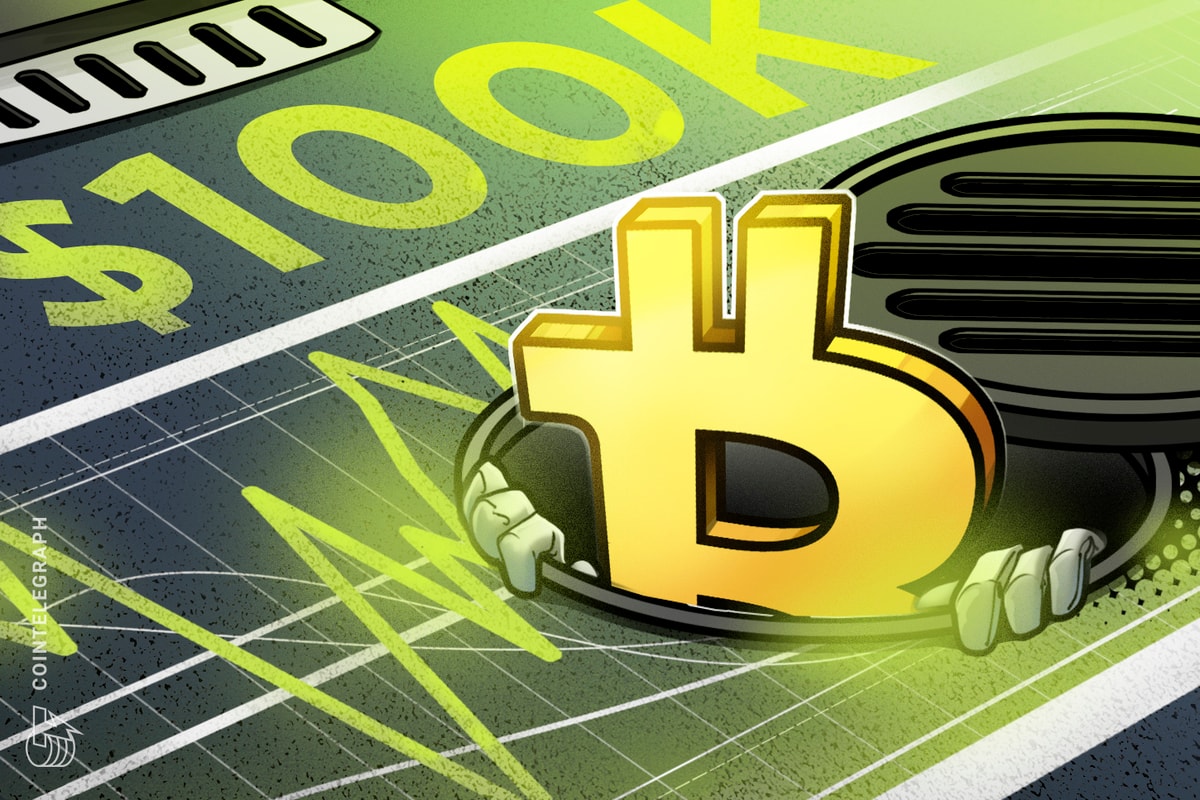Bearish pennant breakdown confirmed? 5 things to watch in Bitcoin this week
5 min readBitcoin (BTC) starts a new week in a precarious place — below $45,000 and below some key moving averages. What’s next?
Almost a week after a cascade of leveraged position unwinding forced the market to $42,800, Bitcoin has erased most of its subsequent recovery.
The weekend produced little by way of a paradigm shift, and now, downside volatility is firmly in place. With BTC/USD down 13% in a week, Cointelegraph takes a look at five things that may help traders to anticipate what the next move could be.
Stocks due for rebound
Stocks are expected to perform better this week after selling pressure added to Bitcoin’s woes in the first half of September.
With a red week behind them, expectations are that equities will now rally, continuing a trend which had characterized markets since the Coronavirus crash in March 2020.
“Expecting equities to bounce this week and provide some relief for Bitcoin,” Charles Edwards, CEO of investment manager Capriole, forecast.
Bitcoin’s overall relationship with macro trends has been increasingly called into question over the past year. Nonetheless, shocks to the system continue to influence BTC price action, as evidenced by the Federal Reserve Jackson Hole virtual summit earlier in September.
“The world still sees Bitcoin as a risk on asset,” Edwards added in comments alongside a comparative chart.
“Almost every Bitcoin correction in 2021 has correlated with a S&P500 correction of -2% or more.”
On the flipside, strong stocks may serve to keep the strength of the U.S. dollar in check, something which also gives Bitcoin more room to breathe.
The U.S. dollar currency index (DXY) saw a brisk move towards 93 last week before halting to consolidate its gains, a process which continues.
Spot price sags further below bullish metrics
Macro moves could be the deal breaker when it comes to this week’s BTC price trajectory, forecasts argue.
After ranging over the weekend, Sunday saw last-minute volatility which ended in BTC/USD slipping below $45,000.
With spot traders hedging their bets on more downside, there has arguably never been a bigger disparity between on-chain metrics, adoption phenomena, and price.
“Stablecoin liquidity increasing, bitcoin on exchanges hit a 3-year low, normies awaken,” Moskovski Capital CEO Lex Moskovski summarized.
“If macro doesn’t sh*t the bed, the next leg up is programmed.”
Moskovski later added that macro markets had indeed begun the week in the green and that stablecoins, not used as shorting collateral, made a clear bullish argument.
Stablecoins are at all time high and not used as a collateral for shorts.
Legacy finance opened green.
What is your thesis for selling, soldier? pic.twitter.com/J2PMtsRVWn
— Lex Moskovski (@mskvsk) September 13, 2021
As Cointelegraph reported, current estimates eye $43,000 and $38,000 as potential price floors, with a rebound from such levels still possible despite being well below important moving averages.
September has been a historically poor-performing month for Bitcoin, and as such, price predictions favor the “real” upside to recommence from October onwards.
“Remember more often than not bitcoin has a red month in September and a big price move in Q4,” popular Twitter account Lark Davis told followers Monday.
“BTC can still hit 100k by end of year.”
Nonetheless, veteran trader Peter Brandt is sounding the alarm — at least for the time being.
“There is a name for this chart pattern. Anybody want to take a guess what it’s called?” he tweeted alongside the daily chart showing what appears to be a breakdown of a bearish pennant construction.
“Dancing with 2017”
It’s not all doom and gloom — when it comes to this halving cycle, Bitcoin this year is still “dancing with 2017” in terms of price gains.
That’s according to data from trading platform Decentrader, which this week signals that BTC/USD in 2021 is still on track for the year after a block subsidy halving.
“Dancing with 2017 at the moment,” Decentrader analyst Filbfilb said in comments over the weekend.
The chart shows the extent to which May’s miner rout upended progress. Formerly between 2013 and 2017 gains, Bitcoin then dropped to forge a new lower paradigm in May, a trend which ultimately continues.
As Cointelegraph reported, a “double top” phenomenon remains analysts’ bet for how Bitcoin will round out 2021 — just like in 2013 and 2017 — with a price dip in between correlating to May’s trip to $29,000.
New all-time high for monthly illiquid supply
A feature which has set last week’s price dip environment apart from previous ones is investor behavior — everyone kept buying.
Unlike the panic during episodes such as March 2020, last week saw excess supply dumped onto the market by speculators eagerly bought up by strong hands.
According to statistician Willy Woo, every class of Bitcoin investors has either added to their positions or stayed neutral through the recent turbulence.
“Whales added recently. Minnows continue to stack. 10-1000 BTC holders mainly flat,” he revealed Sunday alongside data from on-chain analytics firm Glassnode.
“Reserves held publicly reducing (mainly exchanges and ETFs reducing while corporates adding).”
If Bitcoin’s supply is more in demand than ever, similar data reinforces the point. As analyst William Clemente noted, last week had little no impact on hodler patterns.
“93% of Bitcoin’s supply hasn’t moved in at least a month. This is an all-time high. Just another metric showing how bullish supply dynamics are,” he commented, citing Glassnode data.
Where once was greed now comes fear…
It’s all change for investor sentiment gauge, the Crypto Fear & Greed Index, which this week is posting some curious data about market emotions.
Related: Top 5 cryptocurrencies to watch this week: BTC, ALGO, ATOM, XTZ, EGLD
The dip to $42,800 slashed its readings from “extreme greed” to “fear,” a sentiment zone which lingered all the way until Sunday.
As the weekend ended, however, the Index added some fresh “greed” to the mix — despite price action actually falling further.
At the time of writing Monday, Fear & Greed stood at 44/100 — still in “fear” territory — while BTC/USD traded below $45,000.
Funding rates across exchanges, being slightly positive, nonetheless do not discount the possibility of a “short squeeze” boosting price performance.




